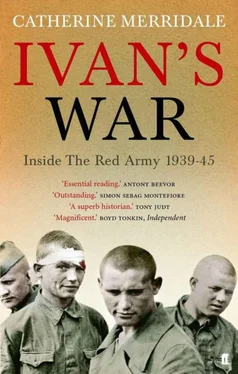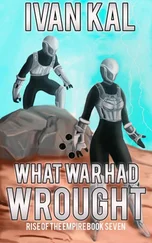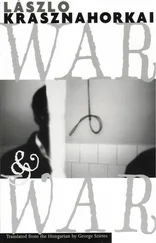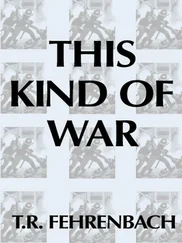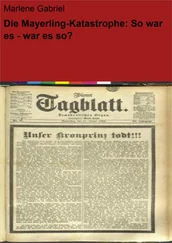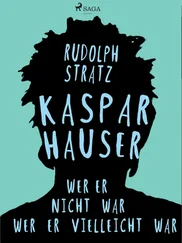The story never gets more frightening than that. Whenever Soviet forces engage with the enemy, the fascists end up running for their lives. Not all the fighting is high-tech, and in fact the biggest set-piece battle in the film involves cavalry and bayonets, but there is no blood. Indeed, there is only one serious wounding. Its victim is a member of a tank crew who joined up in the first wave, together with his brother, and set off for adventure straight away. The men – accompanied by a pretty young nurse – spend a few moments trundling happily along in their Soviet tank, a surprisingly spacious vehicle with a cabin that looks like the inside of a caravan. They could be setting off on holiday, even at the point where their machine grinds to a sudden halt. Our hero, smooth and cheerful as a young Cliff Richard, is certainly undaunted. He grabs a handy spanner, climbs out through the hatch, and then there is a bang, the sound of a man at work, and though we cannot see the actor we can hear him whistling the theme song as he puts the problem right. But then the music stops in a flurry of gunfire. Inside, the other brother’s face sets to a mask of grief. A couple of seconds of suspense follow, accompanied by violins, and we may catch our breath in expectation of a tragedy. But Stalin’s children need not cry for long. The lad’s hand has been hurt, but that is all. Once he has climbed back in and the nurse has bandaged him, he is as good as new. The whole crew starts that song again, and off they go to win the war.
The story ends in Berlin. Soviet planes, wave after wave of them, are flying in formation like so many wild geese. They are not dropping bombs. Their payload is made up of leaflets calling on the population to put down their arms and join the international proletarian socialist revolution. The message is timely, for a large meeting is already under way. The workers in this other land are preparing to desert the slavery of capitalism. Slogans begin to fill the screen. War, we are told, will lead to the destruction of the capitalist world. The fighting will not take place on Soviet soil. These reassuring messages are backed up by fanfares and more banners. The audience is smiling; it is saved. As the music fades another slogan reminds us that the price of freedom is to be prepared for war. To be prepared, that is, to ride to Berlin in a shiny tank, to be a handsome pilot or a pretty nurse, to point a gun at a healthy man and shoot him down without spilling a single drop of blood.
The dream of quick and easy victory might not have been so potent if it had remained confined to the big screen. It might not have been quite so devastating, either. The problem, by 1938, was that the fantasy had affected real strategic thinking. ‘Decisive victory at low cost’ was not just a vision of the propagandists; it was the Red Army’s official goal. Dzigan’s script may have helped to inure citizens to war, but less constructively it was also the scenario for a generation of military thinkers. In 1937, when Stalin replaced his leading strategists with people chosen for their political, as opposed to purely military, distinction, a new approach to national security was adopted in Moscow. In the past, a good deal of planning had gone into strategies for defence. Now the entire orientation of Red Army training began to be directed at offensive operations. The plans and training exercises needed for prolonged defence were scaled down, as were the fledgling preparations for partisan operations inside Soviet territory. 3The notion that the enemy would be repelled and beaten on his own soil was not just a romantic dream; from the late 1930s it was the centrepiece of Stalinist military planning.
It was as if a whole people could share a delusion. As Hitler and his generals were drilling the greatest professional army on the continent, Stalin’s advisers seemed lost in fantasy. There had been dissident voices – powerful ones – but by 1938 the critics had vanished into the silence of the prison camps, the covert graves. If the Bolsheviks could win the civil war, the propagandists shrieked, if they could dam the Dnepr, banish God, and fly to the North Pole, then surely they could keep the fascist invader at bay. History, the ineluctable drive that was moving all humanity towards a common goal, was on their side, after all. The delusion was expressed in many other films of this same era, including one that features yet more tanks. In this production, The Tank Men , the hero, Karasev, is ordered to make a reconnaissance raid across the enemy lines. But he decides to go beyond the line of duty. He engages the sinister enemy in battle, cripples a few machines, and then drives on towards Berlin. When he gets there, he pushes on into the Reichstag and takes Hitler prisoner. ‘Well done, Karasev,’ his mates applaud when he gets home. ‘There’s not a damn thing left for us to do!’ 4
In 1938, the audiences who watched these films would leave the hall and step into a real Russian night. The cheerful crowds and well-lit parks that people had seen on the screen would be nowhere in evidence. Instead, their way home would lie through the bleak construction sites, along the muddy paths between poor peasant shacks or past desolate streets where lights glimmered for just a few blocks before they gave in to the dark. Many were going home to apartments so crowded that two families and three whole generations were packed into one room. Others, the young, might well be finding their way back to dormitories, barrack-style, where dozens of boarders slept in rows. The revolution had not made these Russians rich. It had not even made their land the great industrial power of its own boast, although the rate of change was prodigious, the output staggering. But what distinguished them from other hard-pressed workers struggling to survive was the belief that they were the chosen. They might be hungry, ill-shod, crowded into slums, but they were working to transform the world. They had to win. That was the public face of Soviet culture anyway.

The Soviet state was born in war. If any nation should have known the face of violence, it was this one. First there had been the Tsar’s war against Germany, in which more Russian soldiers died than those from any other European state. 5The prospect of defeat in this, the First World War, along with the hardship that came with the war effort, sparked the riots of February 1917, the outburst of popular rage that toppled the Tsar and swept a new government into power. But it took yet another upheaval, the Bolshevik coup under Lenin, to get the Tsar’s exhausted troops back home. The Treaty of Brest-Litovsk, by which the new state dropped its former allies, Britain and France, in favour of a truce with Germany, brought peace for a few weeks at the beginning of 1918. Those servicemen who had not managed to desert rejoiced at the news that they no longer had to fight. But civil war followed, a conflict that blazed across the future Soviet world like a consuming fire, recalling soldiers to the colours and conscripting bystanders of every age. Its violence, more bitter even than conventional fighting, was only one face of this new war’s cruelty. Wrecked towns and villages were also ravaged by epidemics – typhus in particular – while harvests failed and entire regions starved. By 1921, when the fighting ended in all but the last corners of the emergent state, most Soviet people knew exactly what war really meant.
The greatest promise of the new regime was peace. The word itself had been the most potent element in Bolshevik propaganda back in 1917, and there would be few things, in years to come, that Soviet people wanted more. But though the leaders talked conciliation, declaring that their long-term goal was nothing less than harmony and brotherhood, their policies set them on a collision course with the rest of the world. Marxism–Leninism assumed a prolonged war with capitalism, and while the struggle was certain to end with communism’s triumph, no one believed it would be bloodless. As the ultimate victory of communism drew closer, the ideologists explained, its opponents would fight with ever more determination, clinging for dear life to the power and wealth they had amassed. Some kind of armed conflict was bound to erupt before the world reached its final state of brotherhood and plenty. More locally, there were still remnants of those same elements – bourgeois capitalism, imperialist oppression – to be overcome at home. The state, the self-appointed instrument of the people’s will, set about extirpating them. Class war – a brand-new kind of violence – raged for the next decade. By 1938, its casualties approached 15 million dead and many times that number homeless, broken, orphaned or bereaved.
Читать дальше
